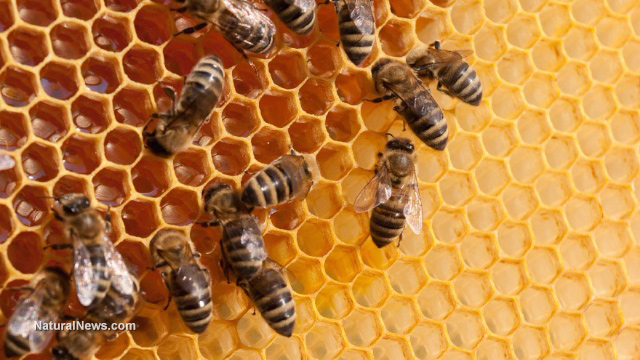Researchers build a robotic platform to observe the effects of neonicotinoids on bee behavior
02/24/2019 / By Edsel Cook

A video camera-controlling robot was used to record the negative effects of neonicotinoids on bumblebees. The Harvard-designed machine was able to record and show the disruptive effects of the pesticides on the way the bees behaved, interacted with other members of their nest, and regulated their body temperature.
Bees are in serious danger from widely used neonicotinoid pesticides. Populations of wild bees have been all but wiped out by the widespread use of the chemicals.
Studies showed that these insecticides caused bee colonies to diminish in size until they are no longer capable of sustaining themselves. However, the means by which neonicotinoids accomplish this harmful outcome remains vague.
For their experiment, Harvard University researchers used bumblebees (Bombus impatiens). These big bees are social insects that cooperate with each other in order to support and maintain their colony. Alterations in their behavior could affect the well-being of the nest.
Previous studies used modified QR codes as tags for individual worker bees that would be exposed to neonicotinoids and released back to their colony. However, this method could only observe a single nest.
The new camera robot can keep track of a bee colony without disturbing it. Furthermore, it could monitor a neonicotinoid-contaminated nest as a single unit, allowing it to keep an eye on bees that interacted with members of many other colonies. (Related: Popular pesticides found to damage ability of honey bee pollinators to FLY.)
Studying the effects of neonicotinoid pesticides on bumblebee behavior
The Harvard researchers rebuilt the chassis of an existing robot that was previously used to study fruit flies. The machine spanned the space of over 18 separate bumblebee nests.
The machine featured a pair of video cameras suspended over the area. One camera would keep track of the activity inside the bumblebee colony while the other unit monitored what was happening inside a foraging chamber assigned to that colony.
The foraging chamber contained pollen and sugar water that substituted for nectar. Half of the chambers contained concentrations of neonicotinoid pesticides found in real world conditions.
The robot can move both cameras across the room to monitor any of the nests and foraging chambers. Its programming brought a camera over a colony or foraging chamber and kept the device focused on that structure for a certain amount of time to record the movement of tagged bees.
Each colony had an artificial nesting chamber made from plastic that blocked visible light but allowed the passage of infrared light. The cameras have an IR function that lets the researchers see through the walls and view the effects of pesticides on the behavior of bumblebees without disturbing the animals.
Neonicotinoids turn social bees into lazy recluses that abandon their duties
Their findings showed that bumblebees affected by neonicotinoid pesticides lost the ability to maintain the temperature inside their nest. They failed to keep the nest warm when the external temperatures dropped low enough to harm the eggs, larvae, and pupae. The worker bees also neglected to build wax canopies over the brood.
Contaminated bumblebees also tended to keep to themselves at the edges of the nest. They devoted less time to performing their jobs and socializing with the other bees. Overall, the poisoned bees displayed less physical activity.
The drastic behavioral changes were observed during the night, when bees perform important jobs like feeding and caring for the developing brood. Worker bees that acted normal during the day would change their behavior once they retired into the nest.
“Now that we think we have a good tool for studying these kinds of behaviors at low levels, we’d like to start studying different compounds at different concentrations,” said Harvard researcher James Crall, who served as the lead writer.
Sources include:
Tagged Under:



















